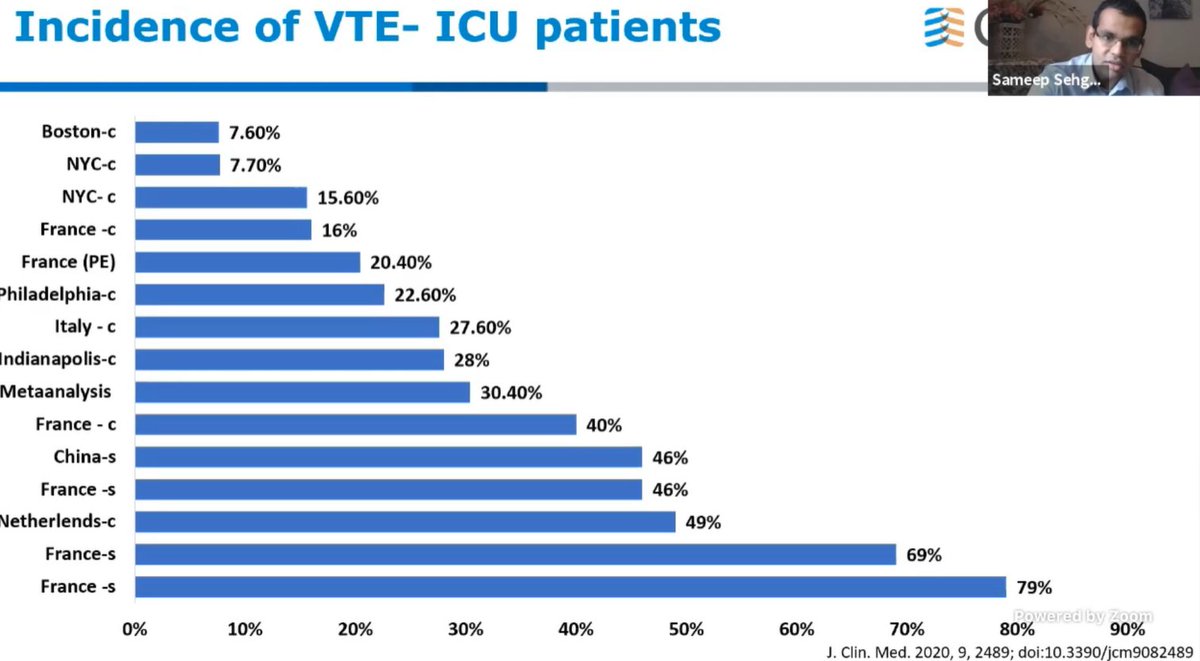
More hospital strain is unsurprisingly a/w worse outcomes. As mentioned, a lot goes into the occupancy of beds suitable for mechanical ventilation: the bed/room and equipment- one MV bed is not always like another (are you in a converted unit)? but especially...STAFFING!🧵
https://twitter.com/juliaoftoronto/status/1349360038595489792
In ideal circumstances, a sick ICU patient on a ventilator has a dedicated ICU nurse focused only on their care and a multidisciplinary team- a doctor, respiratory therapist, pharmacist, all seeing more patients but not so many that they can't give attention as needed...
Ideally, the other ICU RNs will have a good pt ratio too. When a pt needs extra attention (quite often with COVID), the bedside nurse notices changes quickly, extra nurses are on hand to help, and the doctor/others are available for immediate assistance and evaluation.
Proning is a common but staff-intensive; requires at least 4-5 staff inc respiratory therapist. In an ICU that isn't overwhelmed, this can happen relatively quickly and safely. Same w responding to emergencies (w ventilator, urgent procedures, changes to moment-to-moment meds)...
When the hospital fills up, everything is disrupted. A 'soft rationing' kicks in. Pts who might be accepted to ICU for monitoring when more beds are available- (ex: COVID on HFNC, not yet intubated) - may stay on the floor or in other units rather than the ICU...
Patients in the ED might 'board'- wait longer for an ICU bed- even if intubated- because we're waiting to move someone from the ICU to the floor, and there aren't enough people being discharged to keep it flowing. So the bar to get into ICU goes up...
If you add stretched out staff - caring for more pts than they would or using extenders (such as non-ICU trained RNs or doctors)- you provide slower, less ideal care to everyone, including the sickest patients. Acute changes take longer to notice, and
decisions to do something like proning a patient take longer to execute because you need to pull staff that are already stretched thin. With less staff, clinical practices may change too...
It takes a lot of hands-on care for a patient's basic needs, like managing incontinence. So patients get more urinary catheters, rectal tubes, etc because staff just aren't able to provide the same time & attention. That can lead to complications like urinary tract infections.
So as the strain on the hospital/staff increases, the physical number of beds isn't changing, but the staffing needs can't really ramp up to the same extent as the acuity and volume of these patients. That leads to changes in the care over time, in a more insidious manner...
Patients just slowly get different care than they would in a different situation. Rationing isn't all-or-none, it happens on a gradient. As hospitals fill up, staff slowly get overwhelmed and delays result.
The attention of a nurse, respiratory therapist, or physician is a hard resource to quantify - but when it is stretched too thin, it has serious consequences for already critically ill patients.
• • •
Missing some Tweet in this thread? You can try to
force a refresh










